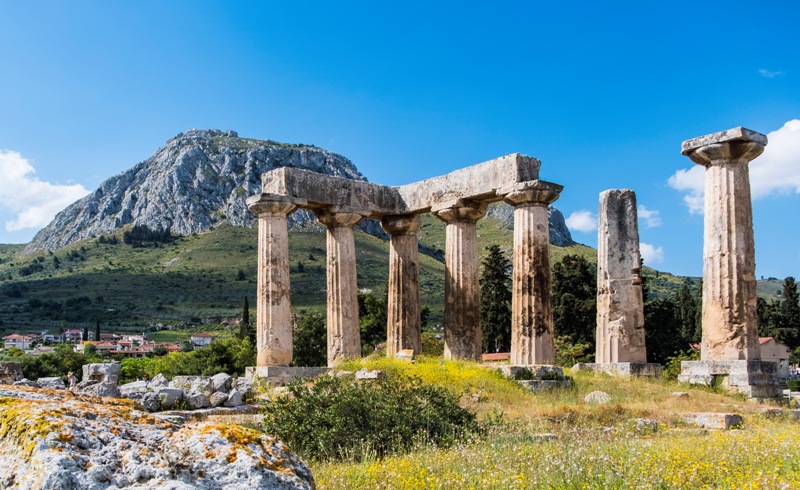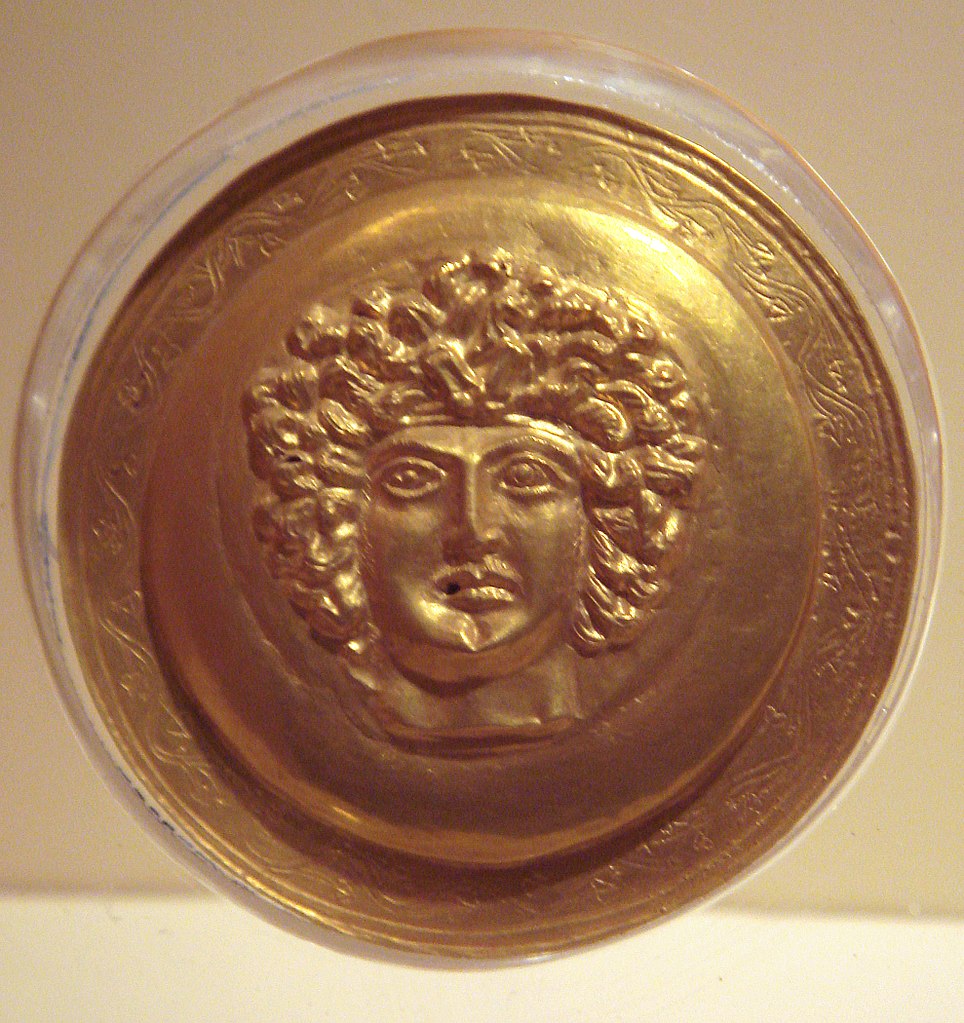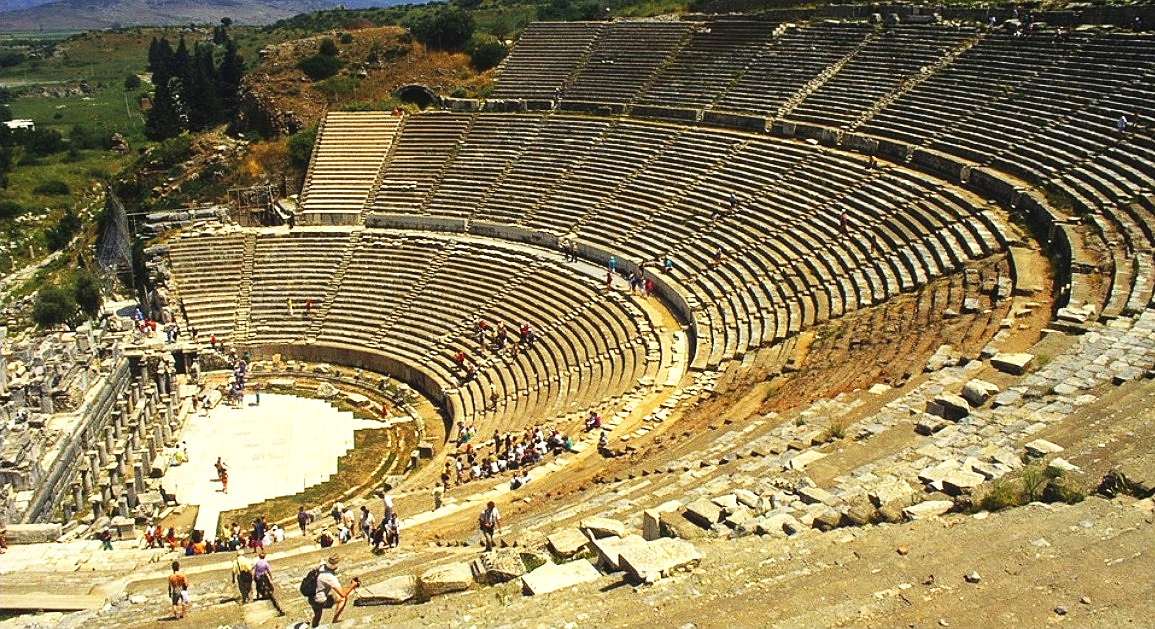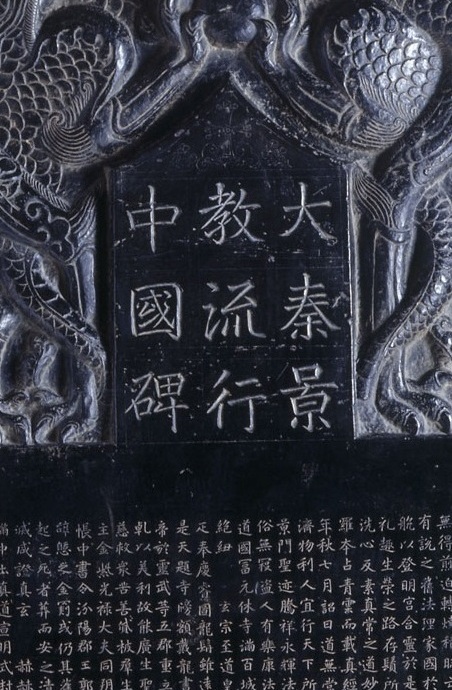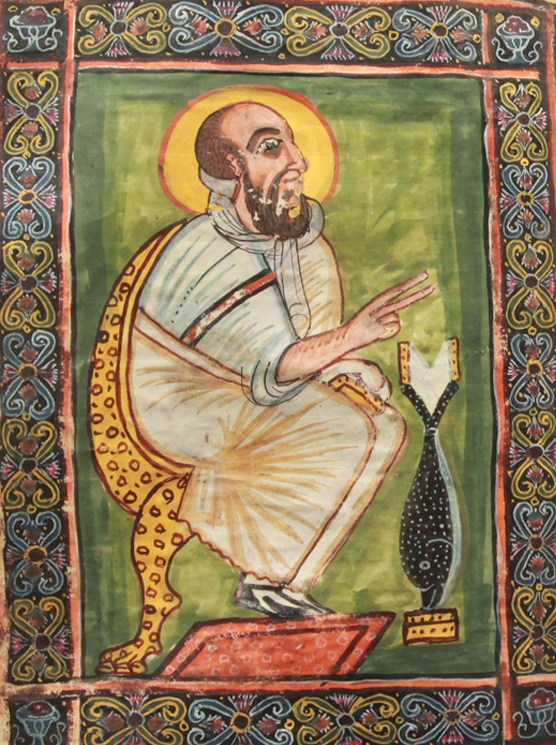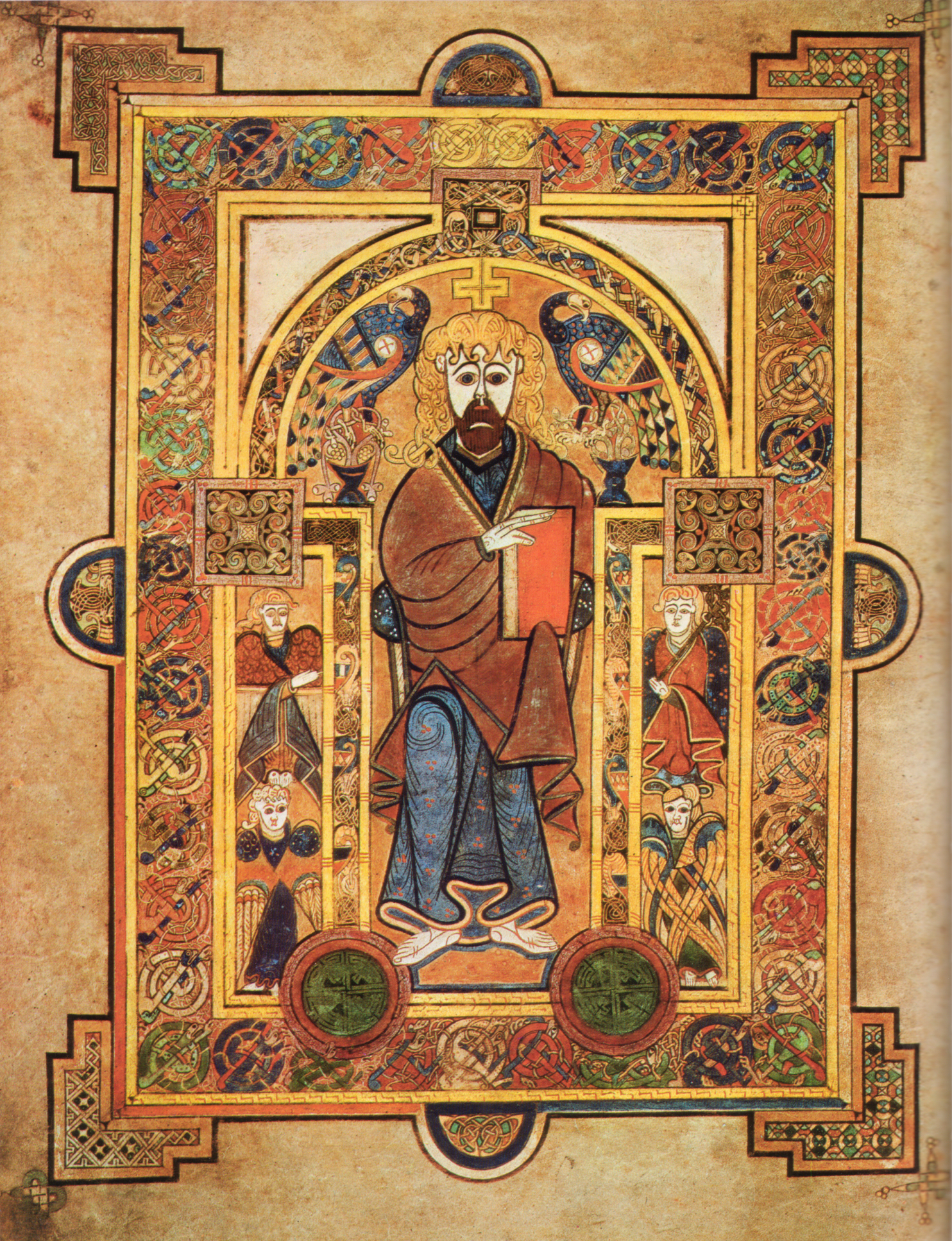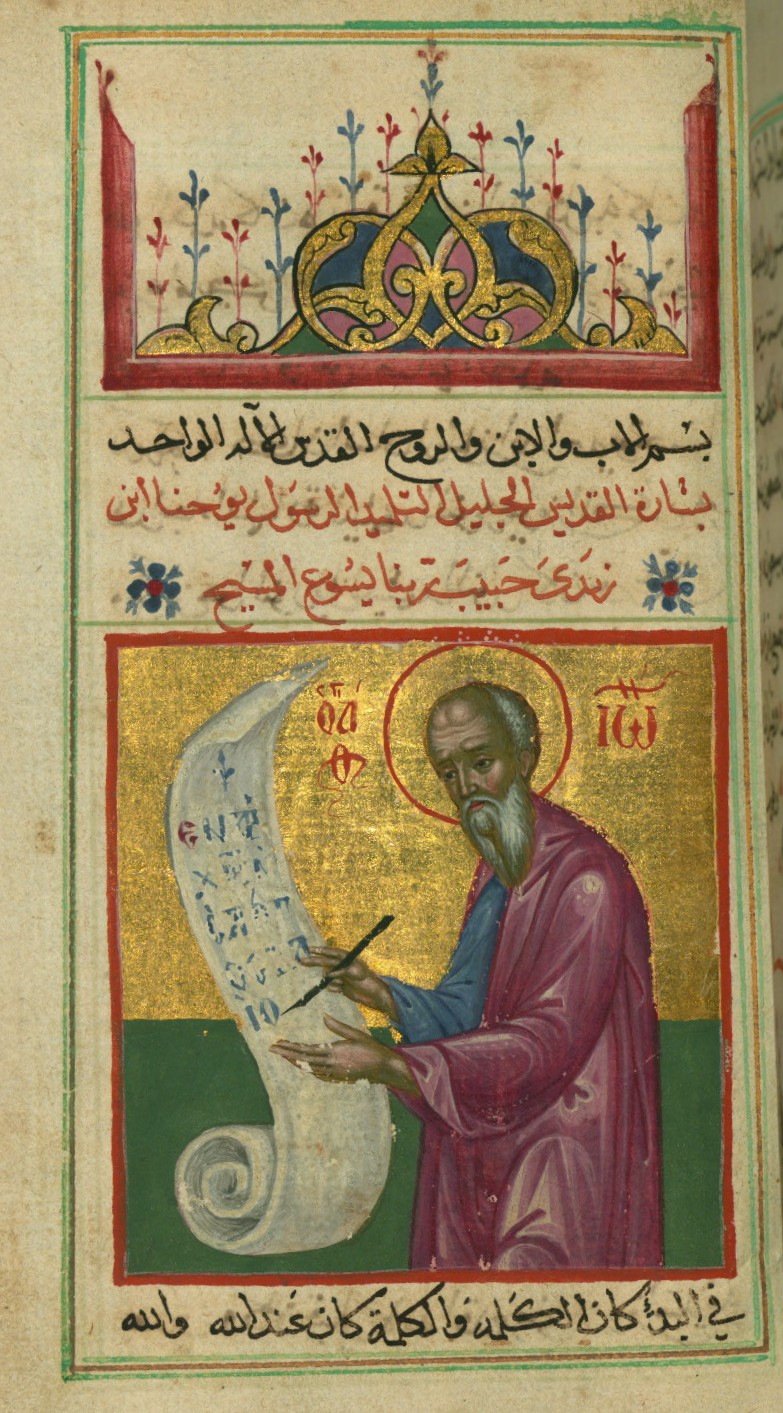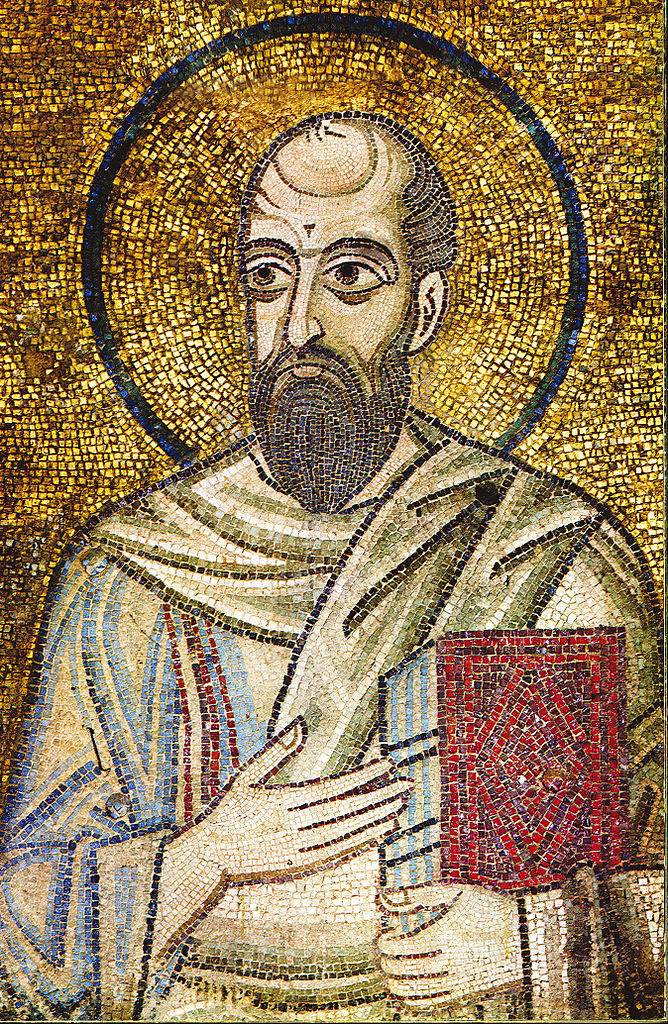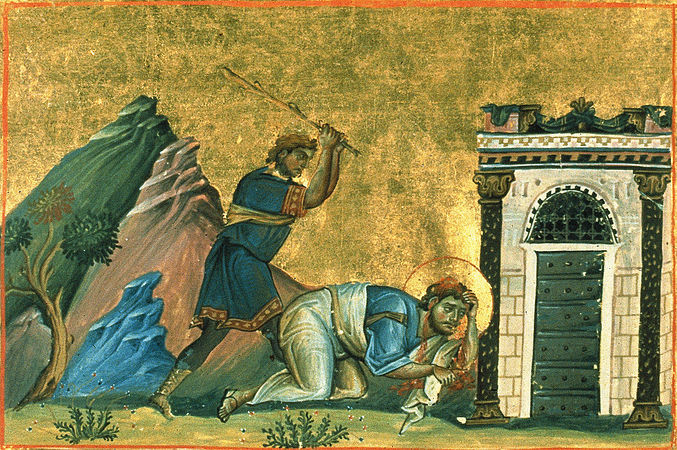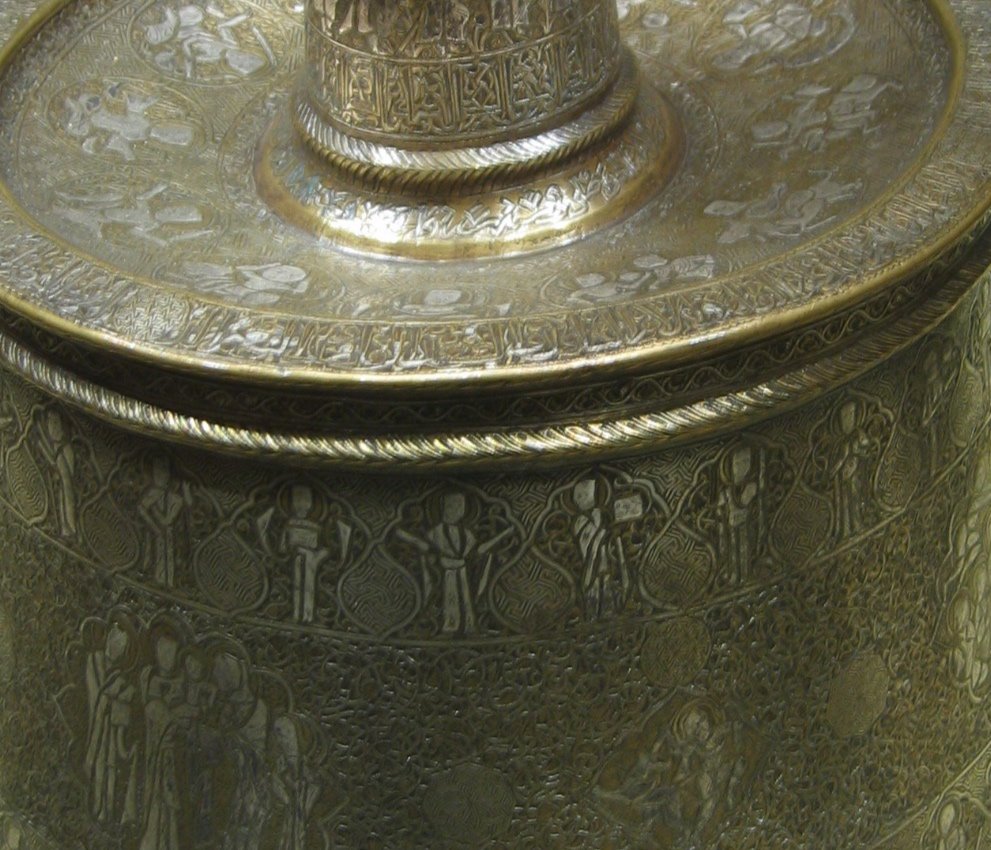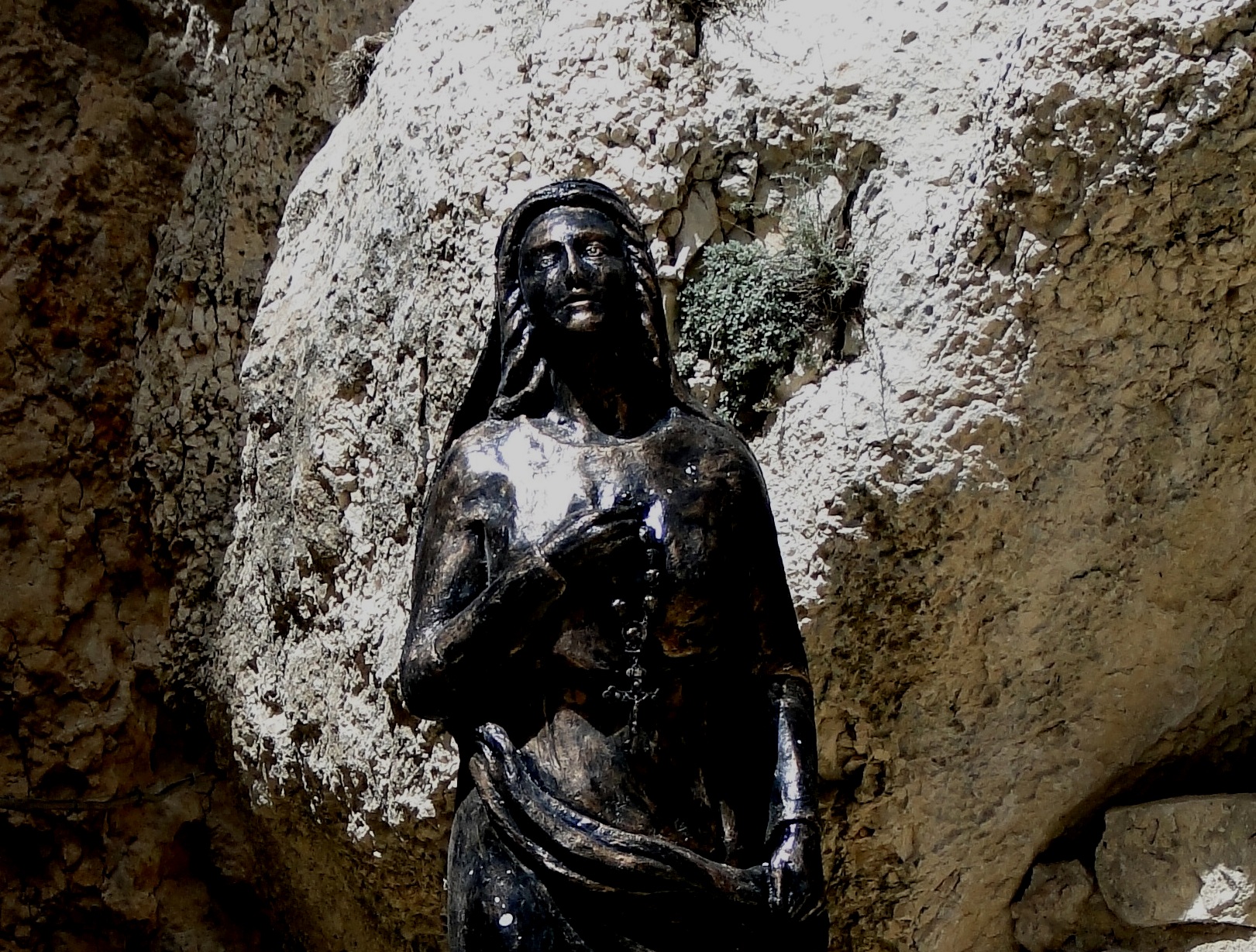Paul’s Letters to the Corinthians
Bible Studies, Messages, Papers
Photograph: In the ruins of Roman Corinth stands pillars of the old Temple of Apollo. The apostle Paul used temple language in 1 Corinthians 3 and 6, and 2 Corinthians 6, drawing into dialogue and contrast the Jewish history of the tabernacle-temple with Greek institutions like this. In the background is the rock mountain called the Acrocorinth. Photo credit: Davide Mauro | CC4.0, Wikimedia Commons; cropped.
Below are messages, small group leader notes, and exegetical notes on 1 - 2 Corinthians.
Messages on Paul's First Letter to the Corinthians
1 Corinthians 1:1 - 9 The Future of Your Body (and video, Sep 2014)
1 Corinthians 1:10 - 2:2 The Body of Christ is One Body
1 Corinthians 1:10 - 2:2 The Funeral Song about Jesus
1 Corinthians 2:3 - 3:4 Which Do You Want More? Jesus or Worldly Power? (and video, Sep 2014)
1 Corinthians 3:5 - 17 The Body of Christ and the Task of Ministry
1 Corinthians 3:18 - 4:17 The Body of Christ and the Imitation of Jesus
1 Corinthians 4:18 - 5:13 The Purity of Your Body and Your Body
1 Corinthians 6:12 - 18 God is the Primary Owner of Your Body: Sex and the Body
1 Corinthians 6:19 - 20 God is the Primary Owner of Your Body (and video, Oct 2014)
1 Corinthians 7:17 - 35 Will You Have an Eternal Impact? (and ppt)
1 Corinthians 9:1 - 27 Jesus' Mission and Our Bodies
1 Corinthians 9:19 - 22 Friendships Across Cultures
1 Corinthians 9:19 - 22 Has Christian Multiculturalism Failed?
1 Corinthians 14:1 - 40 Prophecy: Words of Hope from Your Mouth
1 Corinthians 14:1 - 40 Prophecy Worksheet
Small Group Leader Notes on Paul’s First Letter to the Corinthians
1 Corinthians 1:1 - 9 The Future of Your Body: An Overview
1 Corinthians 1:10 - 2:2 How Do We Build Community?
1 Corinthians 1:17 - 2:2 YOLO vs. God's Wisdom
1 Corinthians 2:3 - 3:4 You're Acting Like Your Politicians
1 Corinthians 3:5 - 17 The Body of Christ and the Privilege of Ministry
1 Corinthians 3:18 - 4:17 The Body of Christ and the Imitation of Jesus
1 Corinthians 4:18 - 5:13 The Community's Responsibility
1 Corinthians 6:1 - 8 Conflict in the Body
1 Corinthians 6:9 - 20 God Dwells in Your Body
1 Corinthians 6:19 - 20 Who Owns Your Body?
1 Corinthians 7:1 - 16 Practical Points About Marriage
1 Corinthians 7:17 - 40 Does Jesus Want You to Get Married?
1 Corinthians 7:17 - 40 Reflections on Purpose, Mission, and Work
1 Corinthians 8:1 - 9:27 Respecting the Jewish Community
1 Corinthians 10:1 - 11:1 The Cravings, the Demons, and the Conscience
1 Corinthians 11:2 - 16 Head and Body: When the Head Speaks to the Body
1 Corinthians 11:17 - 34 Head and Body: Perceiving the Body of Christ Broken For Us
1 Corinthians 12:1 - 31 Head and Body: The Spirit’s Gifts to the Body
1 Corinthians 13:1 - 13 Head and Body: Love and Our Development in the Body
1 Corinthians 14:1 - 40 Head and Body: Jesus’ Spirit Speaks to His Body
1 Corinthians 15:1 - 58 Resurrection of the Body: The Basis and Shape of Faith
Notes and Essays on Paul’s First Letter to the Corinthians
Character Sketches for 1 Corinthians: Paul, Gallio, Chloe, Apollos
This was a creative presentation of various people associated with the earliest Christian mission to Corinth. The stories told here are based on historical research and are meant to make teaching 1 and 2 Corinthians more interesting.
Chiastic Outline of 1 Corinthians
Paul utilized chiastic structures throughout 1 Corinthians, in every place. This study is based on Kenneth E. Bailey's outlines.
Thematic Analysis of 1 Corinthians: The Future of Your Body
Paul organized 1 Corinthians around the language and concept of “body.” He called for unity in the corporate body of Christ (1 - 4). He called for us to guard our individual bodies with care and faithfulness, especially sexually (5 - 7). He discussed the use of our bodies in the corporate body and its mission (8 - 10). He taught on head and body imagery in the corporate body of the church (11 - 14). Finally, he wove all those threads together when talking about Jesus’ resurrection body and our future resurrection bodies (15).
Slavery in Christianity, Part 1: Slavery in the Bible, Slavery Today
Research and slides which explores the Old Testament, then the New Testament. It looks at what the Hebrew "ebed" service meant in context, and then what Greek "duolos" meant and how the New Testament understood the various ways people could enter servitude. It uses a sociological approach, exploring different ways in to becoming an “ebed” or “duolos,” what rights and responsibilities those roles had, and how one could leave and/or escape.
Presentation given October 2, 2021 to the Reconstruction class. Explores early Christian emancipation and abolition. While Christians did not eliminate all forms of servitude, since servitude for civic penalties, indebtedness, war captivity, and self-indenture persisted, Christians eventually did eliminate what we know as chattel slavery. The presentation examines Old Testament institution of the Hebrew ebed servant, and the New Testament approach to Greco-Roman modes of servitude. We glance at how colonialism and Trans-Atlantic slavery deformed traditional Christian teaching, mindful that more slavery exists today across the globe than every before, and that in the U.S., indebtedness and incarceration show that we have greatly exaggerated the claims that the U.S. has done better than the Bible on “slavery” and its constellation of challenges. History shows that 1 Corinthians 6 - 7 played a very significant role in how the early Christians analyzed the claims of any human relationship and institution, like slavery, on the human body.
Paul's View of Headship in Marriage: How 1 Corinthians Interprets Ephesians and Colossians
The word "head" (Greek kephale) was normatively defined by 1 Corinthians 11, where women preached, representing the head to the body. Therefore, people who have not had the experience of sitting under the authority of a female preacher-teacher have an incomplete understanding of headship, and probably an exclusively male understanding, which is defective. Also, the ethics of marriage taught in 1 Corinthians can be shown to take logical priority (not hermeneutical priority, except in a simplistic sense) over the ethics of marriage taught in Ephesians and Colossians.
A presentation given May 7, 2022 to the 2022 Reconstruction class, accompanying the video. Greek and Roman views of the inferiority of women began with Plato and Aristotle (4th century BC). But Pulcheria was a Christian woman who became Roman augusta in 414 AD and presided over the Third and Fourth Ecumenical Councils. Empress Theodora was very influential in the 500s. And Irene became Emperor of the Romans by 800 AD. How did this happen? This presentation explores vocation as the main category by which Christians empowered women in roles distinct from family, examining the Catacombs of Priscilla, Irenaeus of Lyons, The Acts of Paul and Thecla, the Martyrdom of Perpetua and Felicitas, Montanism and the orthodox reaction to it, Melania the Elder, Paula of Rome, Nino of Georgia, Brigit of Ireland. The presentation also discusses the disagreements between Irenaeus, Tertullian, and Origen about how to interpret women in 1 Corinthians 11. This presentation and the video are the second of the 2022 Reconstruction class topics on the early church. See also our YouTube channel Reconstruction playlist for all the videos.
Whose Family? Which Union? Reflections on Scripture, Human Sexuality and God's Purposes
A paper summarizing the five Letters to a Gay Friend. This is an exegetical and pastoral paper examining biblical passages that are important in the discussion about what God’s vision for human sexuality is: Genesis 1 - 2; Leviticus 18 and 20; Matthew 19; Romans 1; 1 Corinthians 6 - 7; 1 Timothy 1. Ultimately, we have to look at the the nature of human desire in general, as a gift from God to move us towards extending ourselves towards Him and others. However, we are called to submit our desires to Jesus, who demonstrated the normative human emotions and desires.
An Exegesis of "Calling" in 1 Corinthians 7
This essay addresses how Protestants tend to use the language of “calling.” Individuals seek God’s will to discern their “calling,” which is especially prevalent for college students, and ages on either side. But 1 Corinthians shows us that “calling” is deeper: to Christ and to his mission, in a broad sense. And the main function of such language is to assist Christians from becoming too entangled in certain relationships where one gives authority over one’s self to another.
This is a letter to a Christian who started to date a non-Christian. This letter draws very heavily from 1 Corinthians.
Women Speaking Authoritatively in the Worship Service in 1 Corinthians 11
This passage indicates that women and men preaching and praying was a standard practice in the earliest congregations. It was established before Paul. This means that the embodied practice of headship including women preaching authoritatively. I argue that this unique Christian worship context controlled the meaning of the word head (Greek kephale). It is therefore a mistake for Protestants to claim 'sola Scriptura' in such a way that scholars look for the meaning of kephale from the Septuagint Old Testament of the Greek usage outside the New Testament. That method does not account for the hermeneutical priority of 1 Corinthians 11.
Women and Speech in 1 Corinthians 11 and 14
This is a comparison of all the possible combinations of how two major passages about women speaking can and must be interpreted together.
Expository Preaching from 1 Corinthians
A workshop on expository preaching using 1 Corinthians as the focus. Learn to develop expository messages using context, content, and communication.
Paul's Use of Amos in 1 Corinthians
The apostle Paul referred to the prophet Amos while writing 1 Corinthians, sharing notable concerns as justice, slavery, the individual human body, the corporate body of believers, worship, creation, God’s knowledge of us, idol-worship, the Gentiles, mourning over sin, etc. Paul uses imagery and rhetoric from Amos as well. This exploration is built on the study of Kenneth E. Bailey.
Paul's Use of Deuteronomy in 1 Corinthians (TBD)
Paul's Use of Isaiah in 1 Corinthians (TBD)
Messages on Paul’s Second Letter to the Corinthians
2 Corinthians 8:9 Jesus Is How God Hears the Cry of the Poor. Sermon given by Mako Nagasawa at Neighborhood Church of Dorchester in September 2021. This is part 4 of a series called The Lord Hears the Cry of the Poor, which started in the Book of Isaiah. The focus was Jesus as the one who became poor like us, to make us rich in his life and love, that we might become rich in life and love towards others.
2 Corinthians 8:12 - 15 Jesus and Economic Empowerment. Sermon given by Mako Nagasawa at Neighborhood Church of Dorchester in October 2021. This is part 5 of a series called The Lord Hears the Cry of the Poor, which started in the Book of Isaiah. The message begins with two friends who bought a house together to make it a space for Christian community and ministry. The message is about how Jesus calls us as his people to empower more generosity.
2 Corinthians 8:1 - 15 We Need to Talk. Sermon given by Mako Nagasawa at Neighborhood Church of Dorchester in October 2021. This is part 7 of a series called The Lord Hears the Cry of the Poor, which started in the Book of Isaiah. The message was an introduction to a community sharing time, where each person shared a need, and something they could offer.
2 Corinthians 9:8 - 9 We Need to Sing. Sermon given by Mako Nagasawa at Neighborhood Church of Dorchester in October 2021. This is part 8 of a series called The Lord Hears the Cry of the Poor, which started in the Book of Isaiah. The focus was how the songs we sing, and the expressions of worship we use, shape our sense of God’s shalom and justice. I spotlighted Psalms 15, 112, and 146. Paul quotes Psalm 112 in 2 Corinthians 9.
Small Group Leader Notes on Paul’s Second Letter to the Corinthians
2 Corinthians 7:1 - 13 Sorrow and Guilt vs. Shame
Notes and Essays on Paul’s Second Letter to the Corinthians
Devotional Reflections on 2 Corinthians 1 - 6
A nine day devotional reflection about how our union with Christ undergirds and empowers ministry.
Incarnation and Atonement in 2 Corinthians: An Analysis of 2 Corinthians 5:21
A seminary paper originally written for Dr. Bruce Beck, St. Paul’s Life, Letters, and Legacy, at Holy Cross Greek Orthodox Seminary, Fall 2018. The paper engages with patristic interpreters, as well and modern Old and New Testament scholars. Paul relies on medical substitutionary atonement theology to express 2 Corinthians 5:17 - 21. His understanding of Jesus’ death could not be penal substitution.
A short two page summary of the argument above.
Giving to the Church: An Exegesis of Paul's Old Testament Quotations in 2 Corinthians 8 - 9
Paul quotes Exodus 16:18, Psalm 112:9, and probably Psalm 147:16 in 2 Corinthians 8 - 9. They support Paul’s argument that God in creation and via creation cares for His people, so that His people can be generous and work towards economic equality.
Other Resources on Paul's First Letter to the Corinthians
Tacitus, Annals, book 15, chapter 44 (circa 116 AD) The Latin phrase odio humani generis which I put in the mouth of Gallio in my Character Sketches for 1 Corinthians comes from Tacitus’ description of the Christians in Rome, when he discussed the six day Great Fire of Rome that burned the city in 64 AD. Tacitus used similar language to scorn the Jews, and many Romans shared his opinion. So I considered it reasonable for Gallio to use that phrase: ‘Consequently, to get rid of the report, Nero fastened the guilt and inflicted the most exquisite tortures on a class hated for their abominations, called Christians by the populace. Christus, from whom the name had its origin, suffered the extreme penalty during the reign of Tiberius at the hands of one of our procurators, Pontius Pilatus, and a most mischievous superstition, thus checked for the moment, again broke out not only in Judæa, the first source of the evil, but even in Rome, where all things hideous and shameful from every part of the world find their centre and become popular. Accordingly, an arrest was first made of all who pleaded guilty; then, upon their information, an immense multitude was convicted, not so much of the crime of firing the city, as of hatred against mankind (odio humani generis).’ (English translation by A.J. Church and W.J. Brodibb, 1876)
John Pollock, The Apostle: A Life of Paul. David C. Cook Publishing, 3rd edition | Amazon page, 1969. The first biographical account of Paul that I read, years ago. While some of Pollock’s theological assessments of Paul have been revised by more recent evangelical scholarship, his historical research is still valuable. In particular, I think his timeline of Paul’s activities in Acts and his letters is the most plausible, including the dating of Paul and Peter’s conflict in Antioch (Gal.2) to before the Jerusalem Council of Acts 15 (p.99 – 105). I also appreciated Pollock’s description of Paul’s training under Gamaliel (p.17 – 19); and Paul’s physical hardships (e.g. the stoning on p.95).
Pope John Paul II, The Theology of the Body (weekly addresses from Sep.5, 1979 to Nov.28, 1984) Historians and theologians increasingly look back on Pope John Paul II and believe that his greatest contribution to the church is not his resistance to Soviet communism but his ‘theology of the body,’ in which he argues that the human being is a sacrament, and that all our relations, especially marriage is sacramental. Dense but rewarding, these addresses on Genesis 1 – 3, the Gospels, and Paul show the former Pope’s concern with this theme, primarily to address marriage and sexuality. In addition, I find that the ‘theology of the body’ naturally concerns issues of economic and political power and relations, since it is with our bodies that we affect and are affected by those realities. The Pope might have given more attention to this had his addresses included Genesis 4, but we can also read his Laborem Exercens and Centesimus Annus to find his thoughts there. Paul’s first letter to the Corinthians, with its emphasis on the resurrection body, both that of Jesus and ours, is the sharpest and clearest New Testament theology of the body.
Peter Brown, The Body and Society: Men, Women, and Sexual Renunciation in Early Christianity. Columbia University Press | Amazon book, 1988. This is one of the greatest works on late antiquity, by one of the greatest historians and biographers of that period, Peter Brown. Kyle Harper, author of From Shame to Sin (below), says that Brown’s work set the groundwork on the topic of sexuality and views of the body.
Gordon D. Fee, The New International Commentary on the New Testament: The First Epistle to the Corinthians. Eerdmans | Amazon book, 1987. Fee’s commentary incorporates the best of contextual exegesis. He introduces each major section with an attempt to reconstruct the historical background. For example, his comment on the city on p.2 – 3 is very illuminating for the tensions between rich and poor: ‘Since Corinth lacked a landed aristocracy, an aristocracy of money soon developed, along with a fiercely independent spirit. But not all would strike it rich, since artisans and slaves made up the bulk of the population... The Asclepius room in the present museum in Corinth provides mute evidence of this facet of city life; here on one wall are a large number of clay votives of human genitals that had been offered to the god for the healing of that part of the body, apparently ravaged by venereal diseases… All this evidence together suggests that Paul’s Corinth was at once the New York, Los Angeles, and Las Vegas of the ancient world.’ Fee also traces the flow of Paul’s argument very well, seeing the letter as a situation of conflict between the church and its founder. While I think Fee underestimates the number of Jewish Christians involved in the Corinthian church, and also underestimates the conflict between those Christians of Jewish vs. pagan background, the commentary is excellent.
N.T. Wright, The New Testament and the People of God. Fortress Press | Amazon book, Sep 1992. N.T. Wright’s first book in the series of Christian Origins and the Question of God lays a very clear foundation for understanding the world of Second Temple Judaism. Wright is perhaps the leading historian and theologian in the field of New Testament. Anyone wanting to understand Jewish movements between Judas Maccabeus in 163 BC and the fall of Masada in 135 AD, and trying to situate Jesus and the early Christian movement in that period, will find this book very helpful. His analysis of the Jewish historian and political traitor Josephus is excellent, especially Josephus’ mention of the Jews’ military fervor being fanned into flame by an ‘ambiguous oracle, likewise found in their sacred scriptures, to the effect that at that time one from their own country would become ruler of the world.’ See p.312 – 314 for Wright’s analysis of Josephus.
Richard B. Hays, 1 Corinthians: Interpretation – A Bible Commentary for Teaching and Preaching. Westminster John Knox Press | Amazon page, 1997. Duke professor Richard Hays is a preacher and New Testament scholar, and because of that, he picks up where Paul is a colorful and effective preacher. Hays makes very helpful suggestions about how to handle 1 Corinthians as a teacher. He is especially sensitive to the way Paul quotes from the Hebrew Scriptures. He argues very cogently elsewhere (Echoes of Scripture in the Letters of Paul and The Conversion of the Imagination regarding Paul’s use of Scripture in Romans) that Paul was not being arbitrary in his selection of texts when he quoted from them. Rather, as Hays presents, Paul was calling attention to entire swaths of textual material, much like how an html link on the internet links you to not a small quote but a larger reference that must be considered in its entirety.
Anthony C. Thiselton, The First Epistle to the Corinthians, edited by I. Howard Marshall and Donald A. Hagner, The New International Greek Testament Commentary. Eerdmans | Amazon page, 2000. Thiselton is acknowledged to be the leading British commentator on 1 Corinthians. This work is fairly advanced, for scholars and not really for preachers. It is massive, almost 1,400 pages. But Thiselton has an impressive command of the literature on all the topics that Paul discusses in this letter. He includes work by very early Christian commentators on 1 Corinthians, so Thiselton helps us understand how opinions about the letter have unfolded over time. He explores each and every theory very thoroughly, and sometimes does not state his own opinion, letting the reader weigh various positions.
(N.T.) Tom Wright, Paul for Everyone: 1 Corinthians. Westminster John Knox Press | Amazon page, 2003. This is a very user-friendly commentary, written in a devotional style. It’s a good starter for anyone. Wright makes very judicious use of historical background notes, such as the grain famine around 56 AD and its impact on 1 Corinthians 7. His scholarly, theological, and pastoral judgments are very good.
Dennis J. Preato, Empirical Data in Support of Egalitarian Marriages and A Fresh Perspective on Submission and Authority. God's Word to Women, Apr 23, 2004. Note comments on Cyril, Theodore, and John Chrysostom and their engagement with 1 Corinthians and Ephesians based on an Athanasian view of the Trinity, where the Son is the power of the Father (1 Cor.1:24), rather than an Augustinian view of the Trinity, where the Son has power, but the Father has more
Roy E. Ciampa and Brian S. Rosner, The Pillar New Testament Commentary: The First Letter to the Corinthians. Eerdmans | Amazon page, Nov 9, 2010. This is a very thorough commentary, drawing from Gordon Fee’s 1987 commentary and Anthony Thiselton’s massive commentary from 2000. It is quite helpful on historical and cultural notes, along with inter-biblical links. Their assessment that Deuteronomy is referenced four times strategically in chs.5 – 12 caught my attention, as is their sense that Paul is developing the Corinthians’ understanding of being an exodus community, called by Christ to set up their own standards of justice over against pagan ones, at least to some degree (5:1 – 6:8). I disagree with their handling of 14:34 – 36, and find that their treatment of 5:6 – 8 is lacking because they do not perceive the atonement-as-cleansing motifs from the Pentateuch or in the Gospels. However, I deeply appreciate their work, which makes Paul’s letter come alive.
Sarah Ruden, Paul Among the People: The Apostle Reinterpreted and Reimagined in His Own Time. Image | Amazon page, Aug 2, 2010) Ruden takes us on a delightful tour of Greco-Roman literary sources and cultural touch points against which Paul must be understood. She reads Paul not as a Christian believer but winds up sympathizing with him in various ways. However, her exegetical understanding of Paul is on the weaker side, and she does not perceive Paul’s reliance on the Hebrew Scriptures.
Kenneth E. Bailey, Paul Through Mediterranean Eyes: Cultural Studies in 1 Corinthians. SPCK | Amazon page, Sep 23, 2011. Bailey’s life work as a missionary and scholar to the Middle East, working carefully with original research in cultural anthropology, and Arabic and Syriac Christian texts long forgotten in the West, is unparalleled. He discerned chiastic literary structures throughout the Old and New Testaments, not least 1 Corinthians. When Bailey turns his highly trained ear and eye to this letter, he hears Paul in the great ‘hymn of the cross’ (1 Cor.1:17 – 2:2) drawing on Isaiah 50:5 – 11 to craft a traditional Greek funeral oration to flip on its head Pericles’ famous funeral oration of the Athenians who had died to save Athens. That is just one example. He hears echoes of the prophet Amos in Paul’s finely tuned message, which is a tantalizing and very relevant thesis that I developed further.
David Instone-Brewer, Bible Scandals: Divorce (BeThinking, 2012) very important considerations for marital abuse cases, which is relevant to 1 Corinthians 7:1 - 16
Ben Witherington III, A Week in the Life of Corinth. InterVarsity Press Academic | Amazon page, Apr 28, 2012. This book was a wonderful work of realistic historical fiction steeped in research. Witherington makes the characters of Erastus, Nicanor, Paul, Priscilla, and others come alive. It served as my inspiration for a firsthand, character-based account of life in Roman Corinth. I especially appreciated his treatment of other temples and beliefs, Paul’s trial before Gallio and the Roman legal system, and the patron-client relationships that demonstrated how Roman society functioned.
Kyle Harper, From Shame to Sin: The Christian Transformation of Sexual Morality in Late Antiquity. Harvard University Press | Amazon page, 2013. Harper handles the literary legacy of late Greco-Roman antiquity with brilliant dexterity. His description of the early Christian stances on sexuality might have been handled with more sympathy and admiration, as Peter Brown did. Nevertheless, he lets the ancient texts speak for themselves as much as possible, and also organizes them as more or less representative of prevailing cultural norms. An ambitious work. From him I learned that ‘a condemned adulteress was forced by law to renounce the stola, the garment of feminine modesty, and don the toga, the traditional dress of the Roman man…and the Roman prostitute.’ (p.41)
Scot McKnight and Joseph B. Modina, editors, Jesus is Lord, Caesar is Not: Evaluating Empire in New Testament Studies. InterVarsity Press Academic | Amazon page, Apr 28, 2013. This was a wonderful collection of essays bringing us up to date on what New Testament scholars believe about whether the NT has an anti-imperial message within its pages. In some ways, it is a literature review, and a very helpful and illuminating one at that. Each contributor to the book not only does an even-handed job with the scope s/he was given (on Matthew, or John, etc.) they take a position curbing the enthusiasts. That curbing is well taken, given that the scavenger hunt for anti-imperial clues has been on since the ‘post-colonial’ paradigm for studying literature, politics, and the social sciences has dominated the field for a few decades: One is likely to find a bit of ‘empire’ to criticize if you go looking hard enough! This book is a good examination of that. So it is with disappointment that I must disagree with each author and the book as a whole. I do so because their methodology is truncated and incomplete: Each author analyzes the correspondences between images and phrases used by the Roman Empire and also used by the New Testament, like comparing ‘Caesar is Lord’ with ‘Jesus is Lord;’ they say that the New Testament’s deeper concern is not confrontation with empire per se, but correspondence with the Old Testament. With this I wholeheartedly agree. However, they stop there, and that is their methodological problem. The Old Testament itself was anti-imperial, and the New Testament builds upon it. For instance, God scattered Babel, then designed Israel to be an open community with laws that respected human dignity and relations, with strict limits on its land claims. Israel’s Scriptures criticized urbanization, the centralization of power in a kingship, and the Temple cult itself. When the major Gentile empires emerged on the scene, Daniel condemned them as beastly against the visionary backdrop of a new Adam figure who would be enthroned above them. So the correspondence between the New and Old Testaments on this issue is deeper than these New Testament scholars perceive. The New Testament is anti-imperial because the Old Testament is anti-imperial. I have put my position into the mouth of Apollos in my fictionalized account of his time in Ephesus, Character Sketches for 1 Corinthians.
N.T. (Tom) Wright, Paul and the Faithfulness of God. Fortress Press | Amazon book, Nov 1, 2013. Wright has made an invaluable contribution to the study of Paul. This material, coming in the form of two books as the fourth and fifth books in the Christian Origins series, was put together after over thirty years of research and debate with other scholars of Paul. Chapters 3, 4, and 5 in particular are excellent to see Paul’s engagement with the Greco-Roman world. Wright makes insightful remarks about Roman poets like Livy, Ovid, and Virgil; paralleling Jewish eschatological hopes, like the Wisdom of Solomon, drawing out the conflict between Jewish thought and literature of this period and the forces surrounding Israel. Wright makes semantic parallels between Stoic philosophers and the apostle Paul in ways that give us a much fuller range of Paul’s cultural fluency and rhetorical power.
Mark Cartwright, The Role of Women in the Roman World. Ancient History Encyclopedia, Feb 22, 2014. This is a succinct article, including a note on women’s dress and hair, along with rights.
"To remind everyone of who was who clothes became a useful tool. Respectable women wore a long dress or stola, a mantle (palla) and had ties in their hair (vittae) whilst prostitutes wore a toga. If a respectable woman was found guilty of adultery, one of the punishments was to wear the toga. It is interesting that women were considered to belong either in one group or the other (there was no third category) but at the same time it was felt necessary to identify them with visual signs lest an embarrassing confusion occurred. The distinction between these two groups was not just a moral one for prostitutes and other lower class women had even fewer rights than women of a higher social status. Prostitutes and waitresses, for example, could not prosecute for rape and the rape of slaves was considered merely as property damage sustained by the owner."
N.T. Wright, God's Powerful Foolishness in a World of Foolish Power. video, Jun 3, 2014. This was a very relevant and timely sermon on a text and themes emerging from 1 Corinthians.
Scot McKnight, The Silence of Complementarians on Slavery. Patheos blog, Apr 25, 2016. Gender complementarians have a methodological problem when they handle the "household codes" of the New Testament, as McKnight points out.
Jackson Wu, Does Paul Use Shame to Challenge or Correct the Corinthians?. Patheos, Nov 8, 2017. Wu gives a very good observations about Paul's rhetoric reflecting his theological convictions.
Kirk MacGregor, 1 Corinthians 14:33b-38 as a Pauline Quotation-Refutation Device. ResearchGate, Feb 2018.
Invicta, Who Are You? Proving Your Identity in Antiquity? Documentary. Invicta, Jun 18, 2021. Provides helpful background on legal, social dynamics. Evidence of identity was offered by people who vouched for you, letters of recommendation, clothing and family seals and other possessions, languages spoken. Governments also maintained records.
Joseph A.P. Wilson, Recasting Paul as a Chauvinist within the Western Text-Type Manuscript Tradition: Implications for the Authorship Debate on 1 Corinthians 14.34-35. Family and Race in Early Christianity, May 11, 2022.
Beth Feller Jones and Amy Peeler, Misusing the Marriage Metaphor from Episode 558: Saddleback vs the SBC & Misusing the Marriage Metaphor with Beth Felker Jones & Amy Peeler. Holy Post Podcast, Mar 29, 2023. Kaitlyn talks with Dr. Beth Felker Jones and Dr. Amy Peeler about Joshua Butler’s controversial article comparing the gospel to marital sex. Jones and Peeler distinguishes between how Ephesians 5 interprets marriage and how 1 Corinthians 7 interprets marital sex. They also correct the “men contribute seed” interpretation of biology with better scientific facts.
Other Resources on Paul's Second Letter to the Corinthians
Michael Gorman, "Paul’s Corporate, Cruciform, Missional Theosis in 2 Corinthians," edited by Thate, Vanhoozer, and Campbell, "In Christ" in Paul (Amazon book, Dec 1, 2014). This is an excellent treatment of 2 Corinthians 5:21 and 8:1 - 9:15, which shows a conceptual unity of the letter, and an important theological unity in Paul's understanding of Jesus' incarnation and atonement, along with our participation in Christ.


